Ten questions and answers about the Global Compact on Refugees
1. Why do we need a Global Compact on Refugees?
At the end of 2017, there were nearly 25.4 million refugees around the world. The burden and responsibility for hosting and supporting such large numbers of refugees continues to fall disproportionately on relatively few countries. Ten countries host 60 per cent of the world’s refugees and the vast majority of refugees (85 per cent) live in developing countries that face their own development challenges. Supporting these countries and finding global solutions for those who flee is critical and can be done by strengthening the cooperation among states, international organizations, civil society and the private sector. This is exactly what the Global Compact on Refugees is about. It is a new deal for refugees and the communities hosting them. The compact seeks to improve protection conditions for refugees in host countries, for example by reducing the need for dangerous onward movements, and ensuring that the development of those countries and communities does not suffer because of their generosity. The compact translates the commitments made by 193 UN Member States through the adoption of the New York Declaration for Refugees and Migrants in September 2016, into practical, concrete measures. It’s a blueprint to guide and strengthen the international refugee response so host communities get the timely support they need, refugees get access to health and education, as well as livelihood opportunities to lead productive lives, and finally, that solutions to the plight of refugees are sought from the start. It will help make responses more systematic, and galvanize action and resources at both local and international level.
2. What does the compact consist of?
The compact has four parts. First an introduction explaining its background, guiding principles and objectives. The Second part is the ‘Comprehensive Refugee Response Framework’ (CRRF). The third part is a ‘Programme of Action’, which sets out concrete measures to help meet the objectives of the compact. Finally, the compact has ‘Arrangements’ for follow-up and review, which will primarily be conducted through a Global Refugee Forum every four years.
3. What do we want to achieve with the Compact?
Its four key objectives are to:
- Ease the pressure on host countries. Almost 9 out of 10 refugees are seeking refuge in the Global South. The countries currently asked to bear the largest responsibility, are doing so as a result of geography alone. These countries need to know that the rest of the world is behind them and ready to support them. With funding, but also with other types of resources such as technical expertise and know-how.
- Enhance refugee self-reliance. Refugees come with skills and experience. They also come with impressive resilience, strength and determination to get back on their feet. By giving them the opportunity to engage in education and to work, they are able to provide for themselves and their families – this allows refugees to regain the human dignity of taking control of one’s own life.
- Expand access to third-country solutions; such as family reunification, work permits, scholarships, sponsorships and resettlement. Resettlement can provide a light in the dark for some of the world’s most vulnerable people, is sometimes even a life-saving gesture, as well as it sends a firm message of support to the major host countries.
- Support conditions in countries of origin, in order for refugees to voluntarily return in safety and dignity.
In concrete terms, the Global Compact on Refugee will result in more predictable support to host countries and communities, more resettlement places and other legal pathways to third countries, and greater engagement in solving conflicts (and root causes), enabling voluntary repatriation to become a real and sustainable option. All elements must be worked on together, with equal determination.
4. How does the Global Compact on Refugees relate to the Global Compact for Migration?
Both Compacts originate from the commitments made when the UN member states adopted the New York Declaration in 2016, but the Global Compact on Refugees relates to refugees only. Contrary to the Global Compact for Migration, the development of the Global Compact on Refugees has been led by UNHCR, the UN Refugee Agency, in collaboration with the UN Member States and NGOs. A wide range of stakeholders have submitted nearly five hundred publicly-available written contributions.
5. Does the Compact replace the Geneva Refugee Convention?
No. The compact builds upon, not replaces, the existing international legal system for refugees – including the 1951 Refugee Convention and other international legal instruments on refugee, human rights and humanitarian law. The Refugee Convention focuses on the rights of refugees and obligations of states. The global compact on refugees reaffirms those standards and principles, and focuses on increasing international cooperation for a fairer, more systematic and comprehensive response so refugees and those hosting them can rely on robust support.
6. Is the Compact legally binding?
No. It is a document that has been intensively negotiated in close cooperation with states and many other stakeholders over the past 18 months, which aims to broaden the base of support available to refugees and the communities which host them. The final text was created in consensus, based on a strong commitment to international refugee protection and international cooperation. It does not create new legal obligations, nor does it modify the mandate of UNHCR.
7. Who has created the Refugee compact?
The UN High Commissioner for Refugees was invited by the UN General Assembly to put forward a proposed global compact to be considered by the General Assembly for consideration at its 73rd session and in conjunction with its annual resolution on the UNHCR. During more than 18 months of intensive discussions, UN Member States, experts, civil society and refugees have held dedicated thematic discussions as well as formal consultations, and stocktaking at the High Commissioner’s Dialogue on Protection Challenges in December 2017. In addition comes lessons learned through the application of the Comprehensive Refugee Response Framework in 15 countries during 2017 and 2018.There was a very strong engagement from UN Member States in the extensive consultation process over the last 18 months, and the final document that the High Commissioner has presented to the General Assembly has broad support.
8. Are the UN Member States supportive of the Global Compact on Refugees?
Yes, a large majority. On 13 November 2018, the Social, Humanitarian and Cultural (Third) Committee of the UN General Assembly approved the compact as part of its annual ‘omnibus’ resolution on the UNHCR by overwhelming majority, and on 17 December it was agreed on by the General Assembly (UNGA). It’s a consensus document and represents multilateralism in action in today’s world.
9. Will we see more refugees coming to Northern Europe because of the Compact?
Refugees flee war, persecution and human rights violations. Their escape is not voluntary and cannot be planned. Globally, the vast majority of refugees (85 per cent) flee to and live in developing countries, close to their former home countries, that face their own development challenges. A key part of the Global Compact on Refugees is to make sure that countries hosting refugees are better supported and refugees can be self-reliant in the country they have fled to. In doing so, it seeks to improve protection conditions for refugees in host countries, including to reduce the need for dangerous onward movements, and to ensure that the development of those countries and communities does not suffer because of their generosity. Also, the compact aims at opening up more legal pathways to lasting solutions, including resettlement to third countries such as the ones in Northern Europe.
10. Where can I find more information?
On UNHCR’s website, there is an own section dedicated to understanding the Global Compact on Refugees. The Global Compact on Refugees can be read here.
Page 1 of 3
-
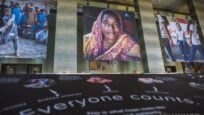
UNHCR, States, partners meet today to assess Global Refugee Forum’s progress
14.12.2021High Level Officials Meeting takes place 14–15 December
-
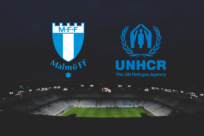
Football club Malmö FF becomes first sports club in Sweden to pledge commitment to support integration of refugees through work and sport opportunities
13.12.2021Recognizing the power of sport in bringing people together, UNHCR, the UN Refugee Agency, and Malmö FF today announce a partnership towards strengthening refugee integration and inclusion in the city of Malmö, Sweden. Malmö FF is pledging to increase employment opportunities for refugees by committing to employ 50 refugees in their Food & Beverage and Service Organization by 2023. In addition, Malmö FF – together with the City […]
-
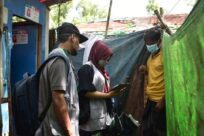
IKEA Foundation and Conrad N. Hilton Foundation invest in better data to boost protection and wellbeing of refugees
09.12.2021The World Bank-UNHCR Joint Data Center on Forced Displacement (JDC) today announced new partnerships—with IKEA Foundation and Conrad N. Hilton Foundation—to understand the challenges of the forcibly displaced and their hosts so that the private sector, governments, aid agencies, and others can help improve their lives. As part of their commitment to the partnership, IKEA […]
-
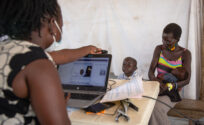
UNHCR strengthens efforts on digital identity for refugees with Estonian support
06.12.2021In a successful implementation of its pledge at the Global Refugee Forum, Estonia has provided an expert on digital identity to further UNHCR’s efforts in digital transformation.
-
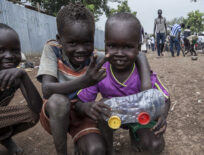
The LEGO Foundation and UNHCR come together to bring the power of learning through play to refugee children in Ethiopia
25.03.2021The partnership ensures 37,500 refugee and host community children can continue their education during the COVID-19 pandemic.
-

Nordic and Baltic countries pledge important support for refugee education
04.02.2021From the Global Refugee Forum: Learn more about some of the Nordic and Baltic commitments aimed at enabling more refugees to go to school.
-
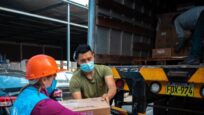
Solidarity in action: One year on from the Global Refugee Forum
17.12.2020At the end of 2019, the energy and optimism of the first Global Refugee Forum created an atmosphere of anticipation for the years ahead. Expectations were high to mobilize action towards the objectives of the Global Compact on Refugees and the fulfilment of the 1,400 pledges made at the Forum. […]
-
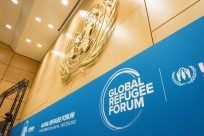
Thank you, Northern Europe
19.12.2019UNHCR’s Regional Representative thanks the countries in Northern Europe for strong and important contributions at the first ever Global Refugee Forum.
-
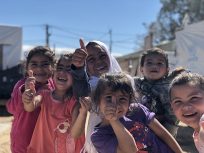
Historic forum yields pledges of jobs, education for refugees
18.12.2019First-ever Global Refugee Forum wraps up with over 770 pledges to boost opportunities for refugees and their hosts.
-

Northern Europe turns solidarity into action
17.12.2019States and stakeholders in Northern Europe are showing Solidarity in Action at the Global Refugee Forum by pledging to create solutions in the region and beyond – and strengthen support for refugees and their host communities.
